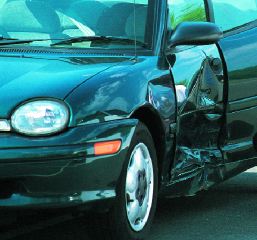

By Roy C. McCormick
Coverage for deer/car accidents and other wild animal damage

Most insurance buyers probably do not know that damage caused by "collision" with a deer or other animal is within the scope of their personal auto comprehensive, or "other than collision" coverage. They probably assume, quite reasonably, that their collision coverage, normally subject to a higher deductible, applies.
I once was driving on an interstate highway in northern Michigan in broad daylight, when a large buck dashed from the grass median and hit the left front of my car. It was traumatic to be involved in the death of a beautiful animal, but it could not be avoided because of heavy traffic and 70-mph speeds. It can happen to anyone.
Therefore, when explaining the perils covered by comprehensive, or other than collision, coverage (which include loss caused by fire, windstorm, flood, earthquake, vandalism and theft), be sure to stress animal damage because occurrences are increasing and the cost of repairs is usually substantial.
Animal damage to dwellings
Policyholders are probably even less familiar with insurance coverage for damage by animals to dwellings. Limitations warrant a review of the particulars provided in Homeowners Special Form 3, which covers direct physical loss to the described dwelling and related structures, subject to specific exclusions. Included in those exclusions is damage caused by animals owned or kept by an insured, as well as birds, rodents, vermin and insects.
The exclusion for direct damage to dwelling property, caused by "animals (mammals) owned or kept by an insured" would apply to either domestic or non-domestic animals. Damage done, for example, by a dog owned by an insured or kept for a vacationing neighbor would not be covered.
However, if a deer or other animal (not owned or kept by an insured) damages property included under dwelling coverage, the policy applies. An example is the occasional report of a deer crashing through a picture window and going on a rampage inside a house.
Personal property coverage
It should be made clear that personal property coverage under Form 3 provides coverage for named perils, which do not include damage caused by animals--as is also true of named peril homeowners forms with respect to both dwelling and personal property coverages.
Note, however, that damage caused by animals to valuable items of personal property may be covered in a scheduled personal property endorsement, under which they are included. Such protection applies to covered perils other than those specifically excluded, animal damage not being among the exclusions. The same protection is provided under a separate personal articles floater, also available for high value items such as oriental rugs, valuable paintings, jewelry, furs, manuscripts, autographs and the like.
Other pertinent exclusions are those for damage caused by rodents, birds, insects and vermin. Courts have relied on dictionary definitions when words and terms are not defined in policies.
Rodents are described as gnawing or nibbling animals, including mice, rats, squirrels, beavers and, in some references, porcupines.
A bird is a warm blooded vertebrate, having a body covered with feathers and forelimbs modified into wings.
Insects include: small, air breathing arthropods having a body divided into three parts (head, thorax and abdomen) and having three pairs of legs and usually two pairs of wings; any small arthropod such as a spider, tick or centipede.
Vermin are noxious or objectionable insects or animals. Insects in this category include lice, fleas and bedbugs. Small animals are those preying upon game, such as weasels and coyotes. Several courts have found raccoons not to be vermin and property damage caused by them not to be subject to the exclusion.
Conclusion
Loss and damage of this kind is not usually a subject for everyday discussion. But when an insured reports damage, a prompt and knowledgeable response, based on periodic reviews of coverage, is reassuring.
Be careful to avoid a flat-out declaration that "you are covered." The adjusting process may reveal particulars of the occurrence that could limit or rule out coverage. A prompt report to the claims department is the necessary first step and, in itself, is satisfying to the insured.
Following my deer/car accident, I proceeded to my destination and reported the incident the following morning. An adjuster was in the driveway shortly after noon, took pictures and gathered the necessary information. Before the day had ended, she had made arrangements with a repair facility for prompt service. They were waiting for me the next day. The $3,314 bill, less the $100 deductible, was paid under my comprehensive coverage.
A response like this by an insurer leaves a lasting positive impression. *
The author
Roy C. McCormick is a contributing editor with The Rough Notes Company.